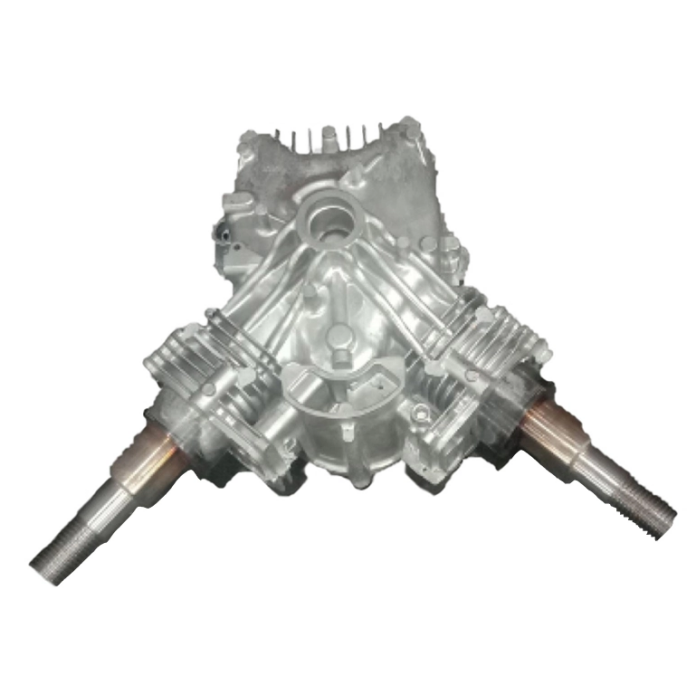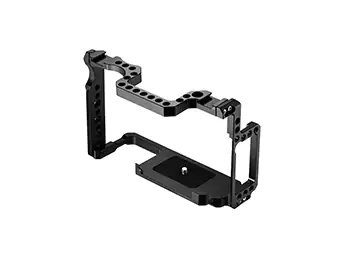Blog
We regularly update articles related to the prototyping and manufacturing industry. You’re welcome to check our previous blogs and subscribe to our newsletter.
A Comprehensive Study: What products are made from die casting?
What is meant by die casting?
In the commonly used manufacturing method, die casting, molten metal is injected under intense pressure into a mould cavity. This technology may produce complex forms with exceptional surface polish and great accuracy. Die casting has tremendous adaptability and is used in several sectors, despite being frequently linked to manufacturing automobile parts. It has precise metal pieces, a fantastic surface polish, and consistent dimensions. Under intense pressure, molten metal is forced into a mould cavity. A casting is a freshly formed object from the mould after solidifying the metal.
Die casting procedure:
Die casting is particularly well suited for making intricate, many pieces with precise tolerances. It is often used in various sectors to produce consumer electronics, appliances, and industrial machinery. It is used in the automobile industry to manufacture engine parts, gearbox housings, and brake components.
- Mould Preparation:
To shape the required item, two hardened steel dies, referred to as the mould or die, are made. The negative form of the component to be manufactured is used to machine these dies. Both dies are mounted to plates, one of which is permanent and the other of which is mobile.
- Melting and Injection:
The chosen metal is melted in a furnace and kept at a regulated temperature. This metal is frequently an alloy with particular qualities suitable for the item’s intended purpose. A hydraulically powered machine uses high pressure to insert the molten metal interested in the mould cavity. The pressure ensures that the molten metal fills the mold’s fine intricacies.
- Solidifying and Cooling:
As the molten metal seals the mould cavity, it starts to solidify and assume the form of the cavity as it cools. The mould has an excellent heat dissipation system to speed the solidification process.

- Ejection & Removal:
The newly created casting is expelled from the mould using ejector pins or other devices once the metal has hardened. The casting is then taken out of the device.
- Trimming and Finishing:
The castings frequently include extra material at the mold’s parting lines or “flash.” Trimming or other machining operations are used to eliminate this extra material. Further finishing procedures may be used to obtain the desired surface quality and appearance, such as deburring, polishing, and coating.
Different variations of die casting:
Die casting has several benefits, including the capacity to create complicated forms, high production rates, and exceptional surface finishes. It also has limits in terms of the choice of materials, restrictions on the design, and the price of making and maintaining the moulds. Die casting comes in a variety of forms, such as:
- A Cold Room Die Casting:
Before being injected into the mould, the molten metal is ladled into a shot chamber. For metals with higher melting points, this is utilized.
- A hot room Die Casting:
The molten metal is brought into the chamber and inserted into the mould while the injection mechanism is submerged in the molten metal. For metals with lower melting points, this is appropriate.
What products are made from die casting?
Die casting is a flexible manufacturing method that has penetrated a variety of sectors and created a variety of goods that have an impact on our daily lives. Die casting significantly impacts modern production, influencing everything from the svelte metal shell of your smartphone to the complicated parts of your car’s engine. Let’s look at what products are made from die casting.
Automotive components:
The automotive industry is driven by die casting, which creates a variety of parts that guarantee the reliable functioning and security of cars. Die casting creates engine blocks, gearbox housings, cylinder heads and even smaller parts like pistons and brackets. The method must be able to precisely manufacture complicated forms to maximize engine performance and overall vehicle economy.
Consumer electronics:
Die casting is largely responsible for the svelte, precise designs of consumer electrical equipment. This method is frequently used to create smartphones, laptops, tablets, and even housings for various home appliances. Die casting is perfect for producing the stylish and practical gadgets we depend on daily because it allows for sophisticated patterns, narrow profiles, and superb surface finishes.

Home appliances:
Many home appliances feature die-cast parts, including coffee makers, blenders, and washing machines. For these goods to work and last a long time, the process must be able to generate strong, precisely formed pieces.
Lighting Fixtures:
Whether for home, commercial, or industrial use, die casting is widely utilized to make the housings and components of lighting fixtures. This guarantees that the fittings are both aesthetically pleasing and structurally sound.
Aerospace Components:
High accuracy and outstanding quality are required for components used in aerospace applications. Turbine blades, brackets, and structural elements for use in aeroplanes and spacecraft are produced with the use of die casting. The method is essential for achieving the strict specifications of the aerospace sector because it can maintain tight tolerances and produce complicated forms.
Medical Devices:
Die casting manufactures numerous medical device components, which helps the medical industry, which depends on accurate and hygienic equipment. Die casting, which guarantees quality and uniformity, can be used to create surgical instruments, prosthetic components, and X-ray and imaging equipment.
Power Tools:
The use of die-cast components considerably improves the performance and longevity of power tools. The method’s capacity to deliver strength, accuracy, and heat dissipation benefits housings, gears, and other crucial components.
Plumbing and Hardware:
Die casting is used in manufacturing numerous plumbing and hardware items. This manufacturing process is responsible for fixtures’ robustness and sophisticated designs, such as door handles, locks, and tap parts.
Recreational Equipment:
Die casting guarantees that items are reliable and useful, from bicycle parts to parts for outdoor leisure equipment, including camping gear and fishing reels.
Industrial Machinery:
Die-cast components are frequently used in industrial machinery for structural accuracy and precision. The method’s capacity to deliver constant quality and performance benefits components used in manufacturing equipment, material handling equipment, and industrial robots.
Conclusion:
We explore in this article what products are made from die casting. In essence, die casting has changed how businesses manufacture complex metal components. Its accuracy, adaptability, and capacity for high production rates have facilitated its widespread use across several industries. These processes will become even more honed as materials and technology advance, allowing for the creation of more intricate and sophisticated objects that will form our modern world. Our organization is still introducing a range of high-precision equipment, recruiting senior engineers, and studying and creating cutting-edge management theories. LOUIS MACHINE has given clients precise plastic goods via years of knowledge and accumulation.





